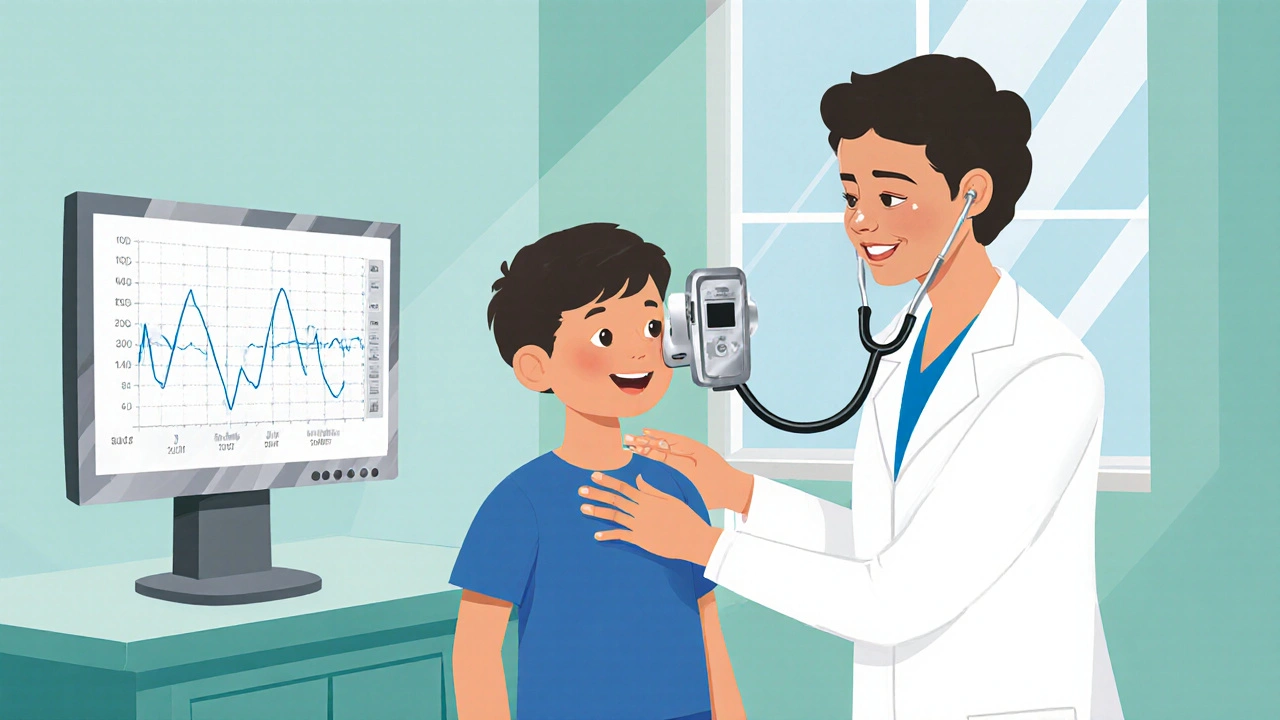Asthma Action Plan Checker
This tool evaluates your asthma management practices and offers feedback based on common indicators such as symptom frequency, medication use, and peak flow trends.
Symptom Assessment
Medication Use
Peak Flow Monitoring
Imagine trying to run a quick sprint and suddenly feeling like your chest is a rubber band that just snapped. That’s a glimpse of life with uncontrolled asthma, and the good news is most of those episodes can be avoided with a timely diagnosis.
Quick Takeaways
- Early detection of bronchial asthma cuts hospital admissions by up to 40%.
- Simple tests like spirometry measure the volume and speed of air you can exhale can spot the disease before symptoms worsen.
- Starting inhaled corticosteroids low‑dose anti‑inflammatory sprays early keeps airway walls from thickening.
- Kids who get treatment early miss fewer school days and play more.
- Regular monitoring with a peak flow meter portable device that records your fastest breath out helps catch flare‑ups before they spiral.
What Exactly Is Bronchial Asthma?
Bronchial Asthma is a chronic inflammatory disease that narrows the airways, leading to wheezing, shortness of breath, chest tightness and coughing. The inflammation makes the muscles around the bronchi spasm, and mucus builds up, turning a simple breath into a struggle.
Why Catch It Early?
When the condition goes unnoticed, the airway walls start remodeling-think of them as a garden hose that gradually gets kinked. That remodeling reduces lung function permanently and makes future attacks harder to control.
Kids who are diagnosed early often maintain normal lung growth, while late‑diagnosed children can lose up to 10% of their peak lung capacity. That loss translates to more missed school, lower sports performance, and higher health costs.
From a public‑health angle, the World Health Organization estimates that early diagnosis could prevent roughly 300,000 asthma‑related deaths each year worldwide. That’s a staggering number that a few minutes of simple testing could help avoid.
Tools Doctors Use to Spot Asthma Fast
Most primary‑care clinics rely on three cornerstone tests.
- Spirometry: The gold‑standard test. It measures forced vital capacity (FVC) and forced expiratory volume in one second (FEV1). A drop of 12% or more after a bronchodilator challenge flags reversible airway obstruction.
- Peak Flow Meter: Ideal for home monitoring. Patients blow into the handheld device; a consistent dip below 80% of their personal best signals worsening control.
- Exhaled Nitric Oxide (FeNO) Test: Elevated FeNO levels point to eosinophilic inflammation, guiding doctors toward steroid‑based therapy.
These tests are quick-usually under 10 minutes-and inexpensive, making them perfect for school health screenings and community clinics.

First‑Line Treatment: What Works and Why
The modern asthma plan revolves around two main pillars.
- Inhaled corticosteroids low‑dose anti‑inflammatory sprays taken daily. They calm the airway walls, preventing the flare‑ups that cause attacks.
- Bronchodilators short‑acting beta‑agonists (SABAs) that relax airway muscles instantly. Used as rescue medication, they open the airways within minutes.
When started early, a low dose of inhaled corticosteroids can keep FeNO levels below 25 ppb, which research from the Global Asthma Report 2024 links to a 30% drop in emergency visits.
For children, the pediatrician a doctor specialized in child health usually crafts a personalized action plan, detailing medication timing, trigger avoidance, and when to seek urgent care.
Managing Triggers: Lifestyle Tweaks That Matter
Even the best meds can’t out‑fight constant exposure to triggers.
- Allergens: Dust mites, pet dander, pollen. Using allergen‑proof bedding and HEPA filters can cut indoor allergen load by up to 70%.
- Air Pollution: Traffic fumes and smoke. Checking the Air Quality Index (AQI) and staying indoors when AQI > 100 reduces exacerbation risk.
- Respiratory Infections: Colds can act as a catalyst. Keeping up with flu vaccines and hand‑washing lowers infection‑triggered attacks.
Simple daily habits-like a 5‑minute nasal rinse or keeping the house humidity between 30‑50%-make a measurable difference.
Early vs. Late Diagnosis: A Side‑by‑Side Look
| Metric | Early Diagnosis (≤6months of symptoms) | Late Diagnosis (>2years of symptoms) |
|---|---|---|
| Annual Hospital Admissions | 0.8 per 100 patients | 3.2 per 100 patients |
| Average Daily Inhaler Use | 1.2 puffs | 3.5 puffs |
| School Absenteeism (children) | 2days/year | 9days/year |
| Quality‑of‑Life Score (0‑100) | 84 | 62 |
The numbers speak for themselves-catching asthma early keeps you out of the ER and back to the things you love.
Action Checklist for Parents & Patients
- Schedule a spirometry test if you notice wheezing or coughing at night.
- Keep a peak flow diary; note triggers alongside readings.
- Start low‑dose inhaled corticosteroids as soon as a doctor prescribes them.
- Carry a rescue bronchodilator at all times.
- Eliminate obvious allergens: wash bedding weekly, use vacuum filters, keep pets out of bedrooms.
- Check local AQI daily; limit outdoor activity on high‑pollution days.
- Review your action plan with a pediatrician or primary‑care doctor every 6months.
Following this checklist can turn an unpredictable condition into a manageable part of daily life.
Frequently Asked Questions
How soon after the first wheeze should I get tested?
If wheezing repeats more than twice in a month, book a spirometry appointment within the next two weeks. Early testing catches reversible obstruction before permanent changes set in.
Can I rely only on a rescue inhaler?
No. A rescue bronchodilator relieves symptoms instantly, but it doesn’t treat the underlying inflammation. Without daily inhaled corticosteroids, attacks become more frequent and severe.
Is a peak flow meter accurate enough for home use?
When used correctly-taking three readings and recording the highest-peak flow meters give a reliable trend. A sudden drop of 20% from your personal best signals you need to adjust medication or see a doctor.
Do adults benefit from early diagnosis the same way children do?
Absolutely. Adults who start treatment early experience fewer work‑days lost, lower medication doses, and reduced risk of chronic obstructive lung changes later in life.
What role do allergens play in asthma management?
Allergens are a major trigger for airway inflammation. Identifying and minimizing exposure-through dust‑mite covers, pet‑free zones, and seasonal pollen monitoring-can cut flare‑up frequency by up to 40%.


Great reminder! Getting diagnosed early can really cut down on ER visits and keep kids playing sports. If you notice wheezing more than twice a month, book that spirometry. A daily inhaled corticosteroid reduces inflammation and the need for rescue puffs. Keeping a peak‑flow diary helps you spot trends before they become bad attacks. Also, cleaning bedding and checking AQI are simple steps that make a huge difference. Stay on top of your action plan and you’ll keep living life to the fullest.